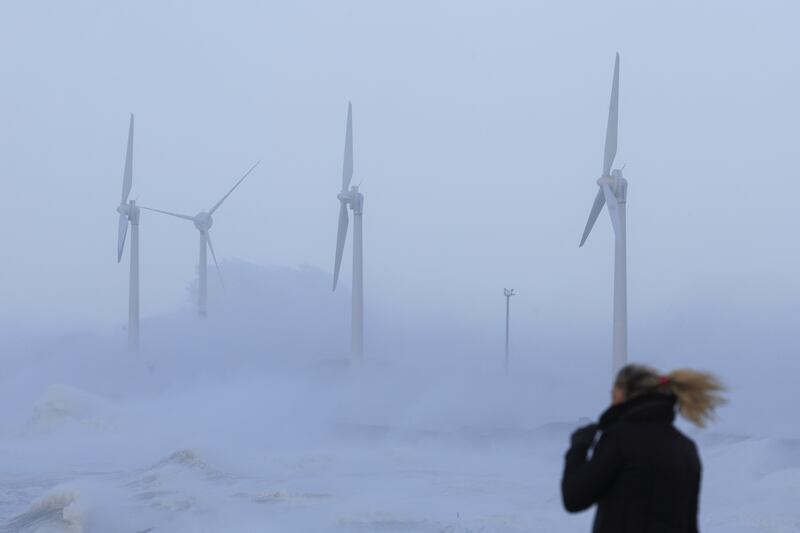Northern Europe’s wind turbines have gone into overdrive amid severe winter storms that sent electricity prices tumbling.
In Britain, which has been shaken by three storms in quick succession, wind turbines at one stage accounted for 42 per cent of electricity generation in a grid normally more reliant on gas.
Electricity prices in Germany plunged into negative territory at one point at the weekend, with conspicuous drops also in Denmark, Belgium and the Netherlands.
But some consumers were unable to take advantage because the high winds of Storm Dudley and Storm Eunice left them without power.
It came after a surge in prices that left millions of homes and factories across Europe facing record bills, and a crisis in Ukraine that has exposed Europe’s reliance on Russian gas and amplified calls to produce more energy at home.
“We want to see more independence of energy imports, including from Russia,” said Jeppe Kofod, Denmark’s Foreign Minister, at an EU meeting on Monday.
As Storm Franklin reached the UK on Monday, renewables – mainly wind – made up 45 per cent of the electricity in Britain’s grid, compared to 25 per cent for fossil fuels. The rest came from nuclear power, imported electricity and other sources such as biomass.
That is a reversal from the usual pattern in which fossil fuels, especially gas, make up the largest share of UK power, although renewables have been closing the gap in recent years.
Wind accounted for 19 per cent of electricity generation last year. But at the peak of the recent storms, the figure was 42 per cent with turbines sending 14.9 gigawatts of power into the grid – a record, said data analyst Kate Rose Morley, who monitors the UK’s electricity supply.
In Germany, supply exceeded demand at one stage on Saturday, meaning producers had to pay consumers to take on their output.
Wind power generation beat a record set last March, grid operator TenneT said, with onshore turbines carrying most of the burden for mainly landlocked Germany.
The German government has a target of covering 2 per cent of the country’s territory with wind turbines, as well as expanding the solar energy sector.
Ministers in the UK want to quadruple offshore wind capacity by 2030 to cover every home’s electricity supply by that date.







